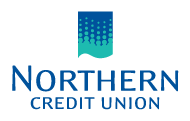Household debt is a reality for many individuals and families. As we navigate through the challenges of managing our finances, it's crucial to tackle debt proactively and with a clear plan in mind.
In this article, we will explore some practical steps and strategies that can help you get a handle on your household debt in a professional yet conversational tone.
Get a Clear Picture
The first step in managing household debt is to gain a clear understanding of your financial obligations. This includes consumer debt and loans. Take the time to figure out where your debt is coming from and calculate your total debt owed, along with the minimum monthly payments required. These totals will provide a clear goal to work towards and help you take control of your financial situation.
Review Your Budget
Creating and reviewing your budget is a fundamental aspect of managing household debt. It allows you to see where every dollar is going and empowers you to identify areas where unnecessary spending can be cut, ultimately saving money.
When reviewing your budget, analyze your monthly income versus your monthly expenses. This evaluation will reveal how much is left over after all your mandatory expenses are covered. Identify needs versus wants and seek opportunities to reduce expenses that are not essential. By doing so, you will free up more money to allocate towards repaying your debts, helping you achieve your financial goals more efficiently.
NEI Investments offers a comprehensive Cash Flow Calculator to help you track your household income and expenses, providing a clear picture of your financial health and helping you make informed decisions about your money.
Determine Your Strategy
Managing debt can feel overwhelming, and it's important to recognize that there is no one-size-fits-all solution. Take the time to review different strategies and determine which one works best for you.
Snowball Method
The snowball method involves paying off the smallest debt first, regardless of the interest rate. By making all the minimum payments on your debts except for the smallest, you can allocate more funds towards paying it off. This approach can provide a sense of control and accomplishment as you eliminate individual debts, ultimately keeping you motivated to continue the process until each debt is paid in full.
Avalanche Method
Alternatively, the avalanche method involves prioritizing your most expensive debts. You'll make minimum payments on all your debts while allocating the most funds towards the debt with the highest interest rate. This method may save you money on interest payments in the long run and help you pay off your debts more efficiently.
Debt Consolidation
Another option to consider is debt consolidation, where you combine your various debts into a single, manageable payment. For instance, you might consolidate your student and car loans into one consolidation loan. This can simplify your financial obligations and potentially lower your overall interest payments.
Next Steps
As you work on managing your household debt, it's important to avoid taking on additional debt whenever possible. Be cautious of offers that allow you to "buy now, pay later," as these can potentially exacerbate your financial challenges. Lastly, consider connecting with a financial advisor for personalized guidance and support tailored to your specific circumstances.
By approaching household debt management with a clear understanding of your financial situation, proactive budgeting, and a tailored strategy, you can work towards achieving a more stable and secure financial future. Book an appointment today.


